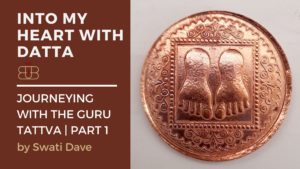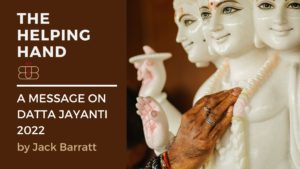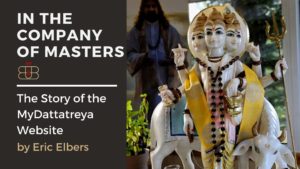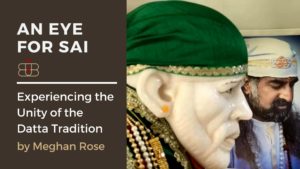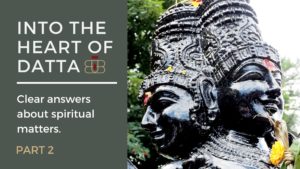Overview and Significance
Kashinath Govind Upasani Sashtry was born on the 5th of May 1870 in a family of Brahmin priests. He was a spiritual renegade. He had no interest in academics and practiced chanting, yoga, and meditation rigorously. His spiritual practices were often extreme. He used to even meditate in burial grounds on Lord Shiva. Even though he married thrice and tried his luck in medicine and other means of livelihood, he always went back to his supreme aim – spiritual growth. He stayed in Nasik and Pune at times and even begged for a living. He resorted to extreme penance without food or water and attained great spiritual powers. It was Shirdi Sai Baba who finally converted Kashinath into Upasani Maharaj, a true master. He left his physical frame in 1941. Even now, Sakori (near Shirdi), where Upasani Maharaj lived the latter part of his life, is a shrine frequented by many. He continues to guide many, even after his physical exit.
Shri Sai’s deeds and life were full of miracles, but the greatest miracle was His transformation of this once inconsequential person to the status of a sadguru within four years! The methods used by Shri Sai to completely transform Kashinath Sastri, the pain taken by him to protect the neophyte, and the assurance with which he grew this unsure and confused disciple to the state of a Perfect Master, indicate where in the spiritual hierarchy of this world Shri Sai is positioned.
Shri Sai once told one of His close associates that the endeavor should be to create these perfect men so that they can, in turn, spiritually uplift thousands and millions of other souls from the state of Jivatma (bonded souls) to the state of Shivatma (Perfect souls). To evolve Kashinath was no easy task for Shri Sai. It is said that the difference in the state of consciousness between a stone and an ordinary man can be compared with the difference between an ordinary man and a Sadguru. Like a man turning a piece of stone by using a hammer and chisel into a beautiful piece of sculpture, the Sadguru can change a gross individual into a perfect soul. This is what Shri Sai was trying to do with Kashinath. Sometimes, the methods he used were harsh from the point of view of Kashinath but meant for his evolution to that perfect state only.
The Kanya Kumari Sthan (monastery for lady-priests) is the unique contribution of Shri Upasani Baba. It is a great experiment in harnessing the female Shakti and has given a new dimension to spiritual endeavours. Virgin girls at a tender age were selected to be initiated in comprehensive training in Sanskrit and in memorizing and reciting the Vedas and other ancient Scriptures. They were also expected to imbibe Vedic culture and civilization’s traditional spiritual philosophies and perform puja and yajnas. Upasani carved out an arduous program by which the young girls would remain absorbed in the contemplation of the Divine. Gradually, the Sthan achieved a triumphant revival of the old Vedic atmosphere when women took a leading part in the spiritual regeneration of the country. This daring and courageous departure from the old orthodox customs of debarring women from religious rites and spiritual progress brought down a storm of criticism against him and his persecution. Still, with his courage and spiritual power, he overcame all the ignorant criticism.
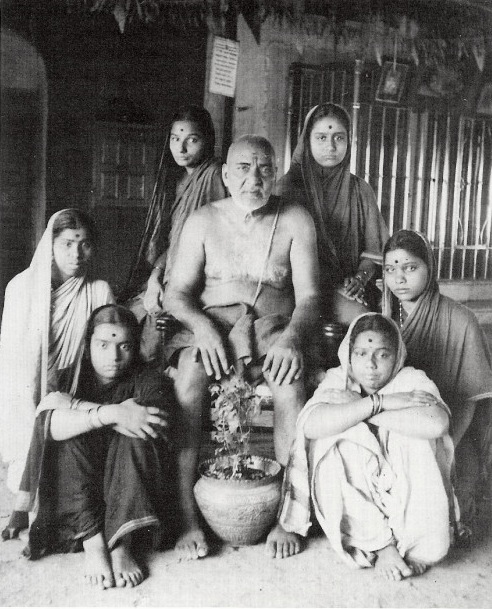
Life History
Upasani Baba’s full name was Kashinath Govindrao Upasani Shastri. On May 5, 1870, he was born as the second of five sons in a Maharashtra family of priests famous for their piety, learning, and devotion in the Satana village in the Nasik district. His parents Govind Shastri and Rukmini formed an orthodox Brahmin family. His grandfather, Gopal Shastri, was the court adviser on religious and literary matters to the Gaekwad of Baroda, besides being an adviser to many other small States. Govind Shastri, his father, was a copyist in the civil court of Dhulia.
His backwardness in studies and the teachers’ consequent cruelty created a permanent aversion to school. Endowed with a sturdy physique, he appeared to have had a remarkable disregard and detachment for his own body. As he grew up, he was more and more attracted by the spiritual side of life and observed all the austerities enjoined by scriptures meticulously. This included Sandhya (twilight meditation) and worship of Sri Rama and Maruthi. He soon started practicing yoga asanas and breath control and reciting Vishnu Sahasra Namas (the thousand holy Names of Vishnu). He often resorted to the burial ground for his devotional practices. His ideal was to carry on Tapas in a lonely place.
At the same time, Kashinath was painfully conscious of his uselessness to his family as a bread-earner and opposed all marriage proposals. But his elders forced it on him, and he married a girl of eight named Durgabai.
However, his parents soon became disillusioned, hoping that the yoke of marriage would render Kashinath more responsible in his ways. Instead, married life only further hurt his self-esteem. One morning he deserted his home, leaving behind a letter with the reasons thereof, and reached Nasik eighty miles away on foot. But soon, he regretted causing anxiety to his aged parents and so wrote home. Two months later, a letter alleging his mother’s illness brought him back.
Not long after his wife died, he was forcibly remarried. He felt miserable and again left on his travels. Mostly he was in Poona, where he lived by rendering menial service or begging. He often tried in vain to quench his hunger with water and margosa leaves and slept on bare earth. But all the while, he sought the company of holy sadhus. Then one of these, a celibate sadhu, impressed upon him the merits of celibacy and devotion to Lord Shiva.
In one of his moods of depression, an old Marathi lady had taught him the verse which meant:
‘Maintain your life, even with water and other things if needed. Love God and bear your lot. Be patient in misfortunes and spurn the smiles of fortune. Break the bonds of desire. (But) never leave the company of saints.’
After another brief stint at begging, he made for his hometown of Satana. On the way, he saw in a dense wood a cave, challenging to access. He was exhausted and, with a thirsting spirit, immediately decided to enter the cave and there fast unto death, watching the end. He climbed a nearby tree and leaped from the tree-top into the cave.
The cave was four or five feet high, nine feet long, and four feet broad. After two days of fasting, he decided to devote his time to the repetition of the Lord’s name. So he started silent repetition of sacred syllables. Soon he attained a high state of mystical trance, i.e. Samadhi. When he woke up from it, he was shocked to see someone standing by his side and skinning him alive. His skin was coming off like the slough of a serpent. The shock of the vision brought him back to ordinary consciousness, and he found no one there, and his skin was intact. He felt very thirsty. His throat was too parched to cry for help, and there was nobody around. His body became stiff, except his right arm, which was free to move. His desire to die was still strong. His thirst also was intense but could be alleviated when he fell again into a trance. Soon there were clouds and a heavy downpour. By the time he regained normal consciousness, water was streaming near him in the cave. He scooped some water with his right hand and slaked his thirst. He then massaged all his limbs till they regained their normal tone.
Three days passed when he had a vivid vision: thirsty, he was approaching a stream for water. Two figures, a Muslim and a Hindu, were by his side. They pulled off his old skin and displayed to him the shining body within and said, ‘Why do you want to die? We are behind you, and we won’t let you die.’
When the vision passed, he realized that fate would not let him die. Weak as he was, with great effort, he reached a nearby village of tribespeople, who fed him adequately. He returned home on the 22nd of July, 1890, and remained in a deep Samadhi state for many months. After three weeks of his arrival home, his father died on 8th August, and he performed the last rites. His grandfather was laid up, and the young Kashinath had to attend to him. This inspired Kashinath to take up the medical profession. Soon his grandfather passed away also, leaving the family in debt. They had to live henceforth by the generosity of Sri Balgangadhar Tilak. At this time, Kashinath’s second wife died. Then Kashinath left for Sangli to learn Sanskrit and medicine. Later he became a prosperous doctor in Amroati, but his spiritual discipline continued. He invested his savings in a large real estate deal, which resulted in a loss, forcing him to return to Amroati. But his medical practice did not revive, and so he gave it up and started with his third wife on a pilgrimage. The couple visited a temple of Gowri Shankar in the midst of a jungle on the banks of the river Narmada and worshipped the Omkara Linga there.
Kashinath started practicing breath control. Once, he lost all consciousness, and his wife became terrified. She revived him by splashing water on his face, but his breathing could not be restored to normalcy. When he massaged specific muscles of his body, he could breathe with difficulty. But off and on, it used to become suspended, especially when he tried to sleep or eat. One visible effect of this was that his belly grew big. He went to Nagpur and then to Dhulia searching for a remedy, but to no avail. Finally, he concluded that only a great Yogi could cure him and started searching for one in April 1911.
Yogi Kulkarni of Rahuri received Kashinath worshipfully and assured him that the latter had attained an advanced stage in Yoga practice. He advised him to see a great Aulia (a Muslim saint), Sri Sai Baba of Shirdi. Despite the yogi’s assurance that Sai Baba was above the distinctions of caste and religion, due to his Brahminic pride, Kashinath continued to search for a Hindu Yogi. Then he met an old man on the road to Rahuri who told him, ‘Drink water as hot as your tongue can bear. Avoid cold water, and you will recover.’ However, Kashinath ignored the advice and marched on to meet a Hindu Yogi named Phatak Maharaj at Moregaon. On the way, at Jejuri, he gave up all concern for his body and spent a week in Samadhi in a lonely place. On the eighth day, when he made for a stream to drink water, the older man he met at Rahuri suddenly appeared before him and admonished him for ignoring his advice to avoid cold water. He commanded him to take hot water in the nearby village and vanished as mysteriously as he appeared. Amazed at the incident, Kasinath heeded the warning, and his condition improved greatly. But fearing a possible relapse, he visited Sri Narayan Maharaj of Khedgaonbet, a famous saint. The Maharaj received Kashinath with great respect and told him that he was as if coated with gold both inside and out, that the latter had attained a high spiritual condition and had no reason for concern. The next day, he was told that his business was over and there was no need to visit the Maharaj again.
He then visited Yogi Kulkarni again, who advised him again to visit Sai Baba at Shirdi.
Accordingly, when Kasinath visited Shirdi on 27th June 1911, his malady disappeared miraculously. Two days later, he sought the permission of Sai Baba to leave for home. Baba asked him to stay in Shirdi for good or come back after eight days, but Kasinath did not accept either alternative. Baba then said, ‘Well, go if you like. I’ll see what I can do.’
Kashinath was mystified to see that during the next week, instead of rushing home, he found himself slowly moving about within fourteen miles of Shirdi. Finally, on the eighth day, at Kopergaon, pilgrims to Shirdi pressed him to take them to Sai Baba, which he did. On seeing him, Sai Baba smiled and asked how long it had been since he took leave. Kashinath humbly conceded that it was the eighth day! Sai then ordered him to stay in a particular building built for devotees there.
Over time, witnessing the experiences of various devotees of Sai Baba developed faith and devotion in Kashinath. The finishing touch, however, was given by Baba himself. One day, Kasinath was sitting in the mosque along with other devotees when Sai told the gathering that once he saw a pregnant woman who did not deliver the child even after years of pregnancy; he later advised her to drink only hot water, which would help her in an easy delivery. The lady ignored the advice and approached a stream for drinking water. Then, feeling that ‘she’ would needlessly ‘die’ with the fetus in her womb, Sai Baba again came to her and admonished her to take hot water from the neighboring village. So she did and got relief immediately.
Kashinath immediately realized that it was indeed his story and that the older man who had advised him to drink hot water was nobody but Sai Baba himself! Moreover, he recognized the truth of Sai Baba’s characteristic statements: ‘I will not allow my devotees to fail; day and night I think of them,’ and ‘I’ll never leave anyone in the middle.’
To clear the remaining doubts in Kashinath’s mind even while he was still wondering, Sai Baba addressed him thus: ‘There is runanubandha between us. Our families have been closely connected for thousands of years. So we are one.’ Tears of gratitude rolled down Kashinath’s eyes.
Sai Baba showed a marked favor to Kashinath, which made several of the devotees jealous. Kashinath stayed in the village shrine of Kandoba and kept alone most of the time on the orders of Sai Baba, who said, ‘He must simply sit quietly in the temple, doing nothing.’ He told Kashinath, ‘Have nothing to do with anybody. Your future is excellent. Nobody else has such a future.’
But the annoyance caused by the jealous devotees of Sai made Kashinath long to get away from Shirdi. He sought Sai’s permission through Shama again and again. But Baba always said he had to ‘clear his accounts’ with Kashinath and did not permit him to go. He told the devotees, ‘Everything I have got has been completely given to him.’ He told Kasinath in 1911, ‘Hereafter, you need not come to me frequently. Come only occasionally. However, you should not talk to me. Nor will I talk to you. After four years, you will have the full grace of Lord Khandoba [a manifestation of Shiva].’
Kashinath still longed to return to his sweet wife and petitioned Baba occasionally for his permission, but Baba would not grant permission for some reason. In January 1912, Kashinath’s third wife died, and he was very upset. Baba consoled Kashinath, saying that He had taken care of the peace of her soul and added, ‘I am fully responsible for you.’
The four years that followed were most eventful to Kashinath. It was punctuated with the bitterest tears and the sweetest joys. Once, for example, Sai said to Kashinath, ‘I shall be coming there, but will you recognize me?’ Kashinath used to cook his food and offer it to Sai Baba before eating it himself. One day a black dog followed him and craved the food, but Kashinath thought of feeding it only after offering it to Sai. On his arrival at the mosque, Sai said, ‘Why come here? I was there?’ Kashinath said, ‘But there was none except a black dog.’ ‘I was that dog,’ came Sai’s reply.
Kashinath resolved not to repeat the error of not recognizing Baba again. But the next day, he found a sudra [non-touchable] beggar staring at the food eagerly as it was being cooked. Kashinath drove him away with harsh words. Later, when he went to Sai with food, the latter drove him away and refused to accept food. The words of Sai, ‘Wherever you may look, I’m there,’ were deeply impressed on Kashinath’s heart. Henceforth he lived in a steadier awareness of his Guru’s omnipresence.
Besides such thrilling experiences, Kashinath had to experience an extreme aversion to food, throwing it away to dogs. Sometimes he went and saw Sai Baba when the latter was on His rounds. Baba always assured him, ‘I am always with you; you need not fear anything. The more you suffer now, the more excellent and happier your future will be.’ Pivoted on such trust in his Guru, he stopped eating altogether for one year during 1913-1914. Strangely enough, although he was going without food and lost considerable weight, he was doing hard manual work like grinding, road-laying, or plowing fields! On a full moon day in July-August 1913, Sai Baba indicated the near completion of His spiritual training of Kashinath when he ordered his devotees to worship him in the temple, even while Sai Baba was worshipped in the mosque.
During this period, Sai Baba took away all the money that Kashinath initially had brought with him to Shirdi by asking Dakshina from him repeatedly. Finally, Kashinath had no money left. Soon his clothes became rags, but Sai never allowed him to put on the new clothes sent by Kashinath’s elder brother. Baba was teaching him practically the significance of His own statement, ‘What man gives never lasts; what God gives never wears out.’
The spiritual training Sai Baba gave to Kashinath was mainly through a number of visions that gradually brought about a transformation in him. One such vision is worth noting. Kashinath had a vision that he entered a house. Sai Baba, who was seated inside, beckoned him with a view to whisper some instruction in the former’s ear. But when He was about to do so, a dark counterpart of Kashinath pulled him away and asked him not to heed Sai Baba’s words. After repeated warnings to the dark figure, Sai Baba beat him, took him to a stream, and burnt him on a pyre. Then Sai returned and said that Kasinath was free of sins now. ‘You are now free from sin. By our united effort, there is much to be accomplished.’ Sai added – ‘You will yourself understand without a word from me.’ Then Sai Baba’s Guru prostrated before Kashinath to the latter’s amazement. Thus ended the vision proclaiming the flowering of Kashinath into a full-fledged saint, Sri Upasani Baba Maharaj. Similarly, on another occasion, Sai Baba showed Upasani Maharaj’s spiritual glory to him. Upasani Maharaj asked Sai, ‘If this figure is the form of my virtue and if the one you destroyed was the form of sin, who indeed am I?’ Sai replied, ‘You are beyond these two. That which constitutes ‘me’ constitutes ‘you.’ There is no difference between you and me.’
This transformation of Kashinath into Upasani Baba was not a mere subjective experience to him. His inner glory started revealing itself in a large number of miracles that his visitors had witnessed. Sitting in the temple, for instance, he would describe everything that happened in the mosque. He knew the innermost thoughts of all and their past, present, and future. In short, Sai Baba molded Upasani Maharaj into His likeness and once told him, ‘You must plant trees that will live for many centuries – from which people will derive benefit,’ implying that thousands will spiritually benefit through him. The nightmare of his life in the temple amidst countless scorpions and cobras, the terrible persecutions he had suffered at the hands of the youths of Shirdi, the jealousy of Sai’s devotees, the pangs of separation from home, all vanished like mist before the rising sun.
At the end of three years of his discipleship in July 1914, Sai Baba would now send His devotees to Shri Sadguru Upasani Maharaj for Darshan.
In 1914 Shri Upasani Maharaj left Shirdi for the first time after several years and traveled to Sindi and Nagpur. Here also, He would beg for food and live away from cleanliness and comforts. But the smell of the rose attracts, and thus people started visiting Him to pay homage and would worship Him. The Hindu social life of 1915 was full of the feelings of caste and creed barriers. To end this barrier of casteism, in February 1915, Shri Upasani Maharaj moved to poor man Namdeo Mahar’s house in Kharagpur. Maharaj, belonging to a high brahmin caste, voluntarily stayed in a cow stable and ate food in the house of Namdeo, who belonged to a lower and untouchable class. The high caste disciples of Maharaj were forced to come to Namdeo Mahar’s house to seek Maharaj’s blessing and be prepared to receive a warm welcome by Namdeo. After some time, Maharaj went to Nagpur and then returned to Shirdi to inhabit once again Khandoba’s temple. But the atmosphere at the temple was different this time, as devotees began to gather in larger numbers, and happy times began. The seeker who had lived a life of hard penance at this temple was now a Master. The beggar of truth was now the King.
Gradually it became customary for those who came for Sai Baba’s darshan to also visit the Khandoba temple and meet Upasani Maharaj. Even Sai Baba would ask some of the disciples to go to Sakori, and Maharaj was now known as His spiritual heir. It so happened one day that a Swami came to meet Sai Baba. This arrogant Swami considered himself next to none in spiritual knowledge. Sai Baba soon asked this Swami for a favour: ‘Will you please go to Sakori and bring me four hundred rupees from Upasani, as I am in urgent need of money? It is very important.’ The Swami proudly walked up to Sakori expecting a warm welcome, being an Ambassador of Sai Baba. Upasani Maharaj was, as usual, sitting naked under a tree when this arrogant Swami arrived and started demanding four hundred rupees. Upasani Maharaj got up immediately as if the matter was really urgent, and before the Swami could understand what he was going to receive so urgently, Maharaj grabbed the Swami and beat him up. The shaken Swami returned to Shirdi to find Sai Baba smiling over the warm welcome at Sakori. Indeed, the Swami had received the real blessings.
Upasani Maharaj began residing in Sakori, a place nearly five kilometres from Shirdi, in July 1917. When Sai Baba dropped His physical form in 1918, Sakori, a small, poor village, had already become spiritually rich with the presence of Upasani Maharaj and a growing fleet of disciples. Maharaj looked after the last rites of Sai Baba as His chief disciple.
Maharaj always welcomed hardships. Once, in 1921, He locked Himself inside a small bamboo cage. The cage was too small for such a stout person like Maharaj, and He was most cramped inside. He said He suffered for the release of His disciples and was standing as a surety in the divine court for their release. Over thirteen months, He confined Himself to that small cage, practically fulfilling all His daily needs from there. The disciples performed His ‘Aarti‘ and listened to His discourses from within the cage. At last, on 31st January 1924, Maharaj released Himself from the cage and stepped out of it to greet a small child named Godavari.
Upasani had himself put into a cage for over one year as a ‘penance’ for his devotees.
This small child, Godavari Vasudev Hatavalikar, later became the inheritor of the spiritual wealth of the Sakori Ashram. In their first meeting, the Sadguru removed the garland from His neck and placed it around the girl’s neck, astounding His devotees. Maharaj also visited many places around India, including Hyderabad, Bombay, Kolhapur, Indore, Benares, Surat, Nagpur, Jabalpur, Katni, Ahmednagar, Poona, and many more.
Sri Upasani Baba finally left his gross body in the early hours of the 24th day of December, in the year 1941. Like his Guru, Upasani Baba had given enough indications about his final departure earlier. A big Samsthan took shape in Sakori to meet the needs of the seekers who go there for spiritual enlightenment.
Listen and watch The Sai Upasani Biography song: https://youtu.be/xX7iIThYVzQ
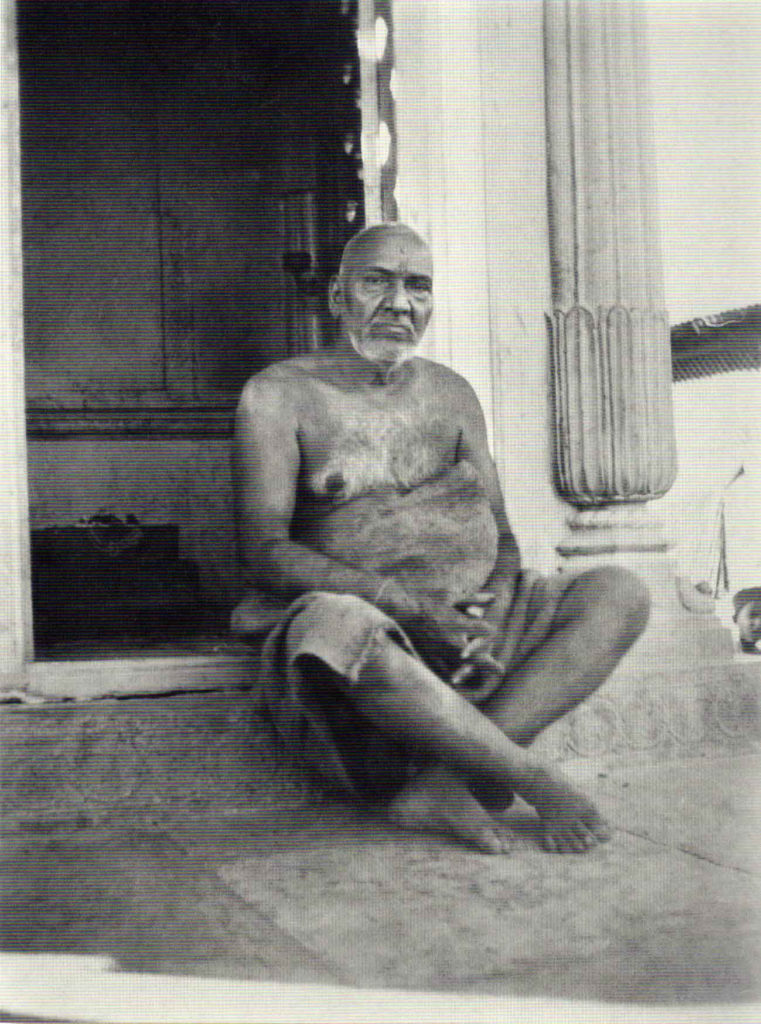
Teachings
The principal teachings of Upasani Maharaj were that there are three rules that, if observed sincerely, lead to a life worth living:
- Not to trouble anybody in the least.
- To suffer for and be useful to others.
- To remain contented in a state of ‘Be as it May.’
The Kanya Kumari Sthan (monastery for lady-priests) is the unique contribution of Shri Upasani Baba. It is a great experiment in harnessing the female Shakti and has given a new dimension to spiritual endeavours. The virgin girls at a tender age were selected for the purpose of being initiated in comprehensive training in Sanskrit and in memorizing and reciting the Vedas and other ancient Scripture. They were also expected to imbibe the traditional spiritual philosophies of the ancient Vedic culture and civilization and perform puja and yajnas. Upasani carved out an arduous program by which the young girls would remain absorbed in the contemplation of the Divine. Gradually, the Sthan achieved the triumphant revival of the old Vedic atmosphere when women took a leading part in the spiritual regeneration of the country. This daring and courageous departure from the old orthodox customs of debarring women from religious rites and spiritual progress brought down a storm of criticism against him along with his persecution, but with his courage and spiritual power, he was able to overcome all the ignorant criticism.
Sacred Practices/Sadhana
All the rituals in the Sthan take place first in the Datta Mandir. ‘Kakad Aarti‘ (first ‘Aarti‘ of the day very early in the morning), ‘Madhyanna Aarti‘ (‘Aarti‘ at noon), “Shejarti” (last ‘Aarti‘ of the day late at night), takes first in Datta Mandir and then in ‘Zopdi.’ Although these kanyas come from various states, castes, and creeds, their conduct and worship are common to all. They are experts in performing the srauta ritual and the Ganesha, Vishnu, Rama, Guru, Chandra, Surya, and Rudra yagas. The materials for rituals are produced and preserved at the ashram, and a sacred fire is kept ablaze at the yagasala around the clock. A number of followers of Upasani Baba and Mataji often visit the ashram, while the resident Kanyas perform Purohitya rites. They are also paid to teach Vedic mantras and ride bicycles to religious events in the village for this purpose. They are experts in Samagama and are invited from all over India to cities like Pune, Hyderabad, Kolhapur, and Banaras.
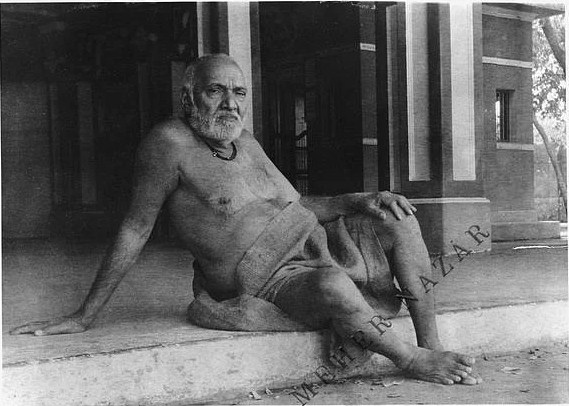
Miracles
Upasani Maharaj was not known to outwardly display his spiritual power with miraculous theatrics. However, when a young man named Merwan Irani – who would later become Meher Baba, and who had previously been catapulted into a state of transcendent consciousness by the kiss of the Perfect Master, Hazrat Babajan – when he arrived to meet Upasani Maharaj, the following incident occurred:
‘Upasani was seated on its steps, naked and virtually as thin as a skeleton. As Merwan approached, Upasani picked up a stone, stood up, and threw it with all his strength at Merwan, striking him on the forehead exactly on the spot where Babajan had kissed him. The force of that holy blow was so strong it drew blood and left a permanent scar on Merwan’s forehead. . .
Merwan had been divinely absorbed in his own Godhood and had very little normal consciousness of the world around him since Babajan had kissed him nearly two years before. With the wound from this stone thrown by Upasani Maharaj, Merwan’s worldly consciousness was to gradually increase and eventually return completely—though the process was to take nearly seven years.‘
Contemporary Masters
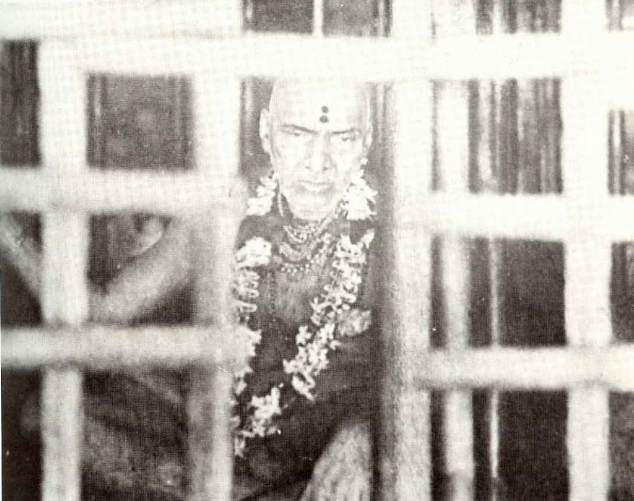
Holy Sites and Pilgrimages
Shri Ek Mukhi Dattatreya in the Dattatreya temple in Sakori
Once, the queen of the princely state of Gwalior during the Shinde dynasty came for Shri Upasani Baba’s Darshan. She shared with Shri Baba whatever her wish was. She stayed at Sakori for about a month in the company of Shri Baba. She returned after her wishes came true with the blessings of Shri Baba. Shri Baba initiated her to build a temple of ‘Shri Ek Mukhi Dattatreya’ around the year 1925. Mr. Valimbe was the chief architect and civil engineer working on the construction of the temple. He worked under the guidance of Shri Baba and completed the construction of this temple in 1928. The temple initially only had the photo frames of Shri Sai Baba and Shri Upasani Baba and the ‘Padukas‘ (footprints) of Shri Sai Baba. Shri Upasani Baba stood on the same ‘Padukas‘ himself and then also made Shri Godavari Mataji stand on the same ‘Padukas‘ while she was still a small girl. Therefore, these ‘Padukas‘ have a very special significance.
The idol of Shri Ek Mukhi Datta, which visitors now see, was specially sculpted by a famous sculptor from Jaipur in Sakori, under the supervision of Shri Upasani Baba himself. When Shri Godavari Mataji was watering plants, Shri Upasani Baba called her and ordered her to pose for a photograph. Shri Baba directed the sculptor to take a photograph and directed to carve the idol exactly as per the photograph. This idol of ‘Ek Mukhi Datta’ has the face of Shri Godavari Mataji, while the dress is that of the jute cloth Shri Upasani Baba used to wear. Since Shri Sai Baba is considered an incarnation of Lord Vishnu, to symbolize Shri Sai Baba, the idol has four hands equipped with the symbols like ‘Shankha’ (sea shell), ‘Chakra’ (round blade), ‘Gada’ (special traditional weapon) and ‘Padma’ (lotus). Therefore, this idol of Shri Datta has a very special significance and unique importance as it symbolizes the unity of Shri Sai Baba, Shri Upasani Baba, and Shri Godavari Mataji—three great icons in this spiritual lineage.
Sakori darshan: https://youtu.be/gopXOkex7H8
Bibliography
- The Sadguru of Sakori Upasani Maharaj (1870-1941) A Perfect Master of India by Dr. Anurag Gumashta, et al.
- The Sage of Sakori by Mr. B. V, Narasimha Swami
- Harper, Marvin Henry The Saint who suffered: Sri Upasani Baba Maharaj, Chap. 3 in Gurus, Swamis and Avatars: Spiritual Masters and their American disciples, Philadelphia: Westminster Press, 1972.
- Jannarkar, R. S., A Pictoral Story of Shree Upasani Kanya Kumari Ashram, Sakuri, Reprint; Sakuri: Shri Upasani Kanya Kumari Sthan, 1973 (1955).
- Narasimha Iyer, Bhavani, Sage of Sakori, Madras, 1935.
- Tipnis, S. N., Contribution of Upasani Baba to Indian culture, Shri B.T. Wagh, 1966.
- Meher Baba, ‘God Speaks’, containing his life story and his association with Upasani Baba.
External Links
https://brahmarishimohanji.wordpress.com/2010/01/23/great-masters-shirdi-sai-baba-part-2/
http://saiamrithadhara.com/mahabhakthas/upasani_baba.html
http://trustmeher.org/meher-baba-perfect-masters/upasni-maharaj
http://www.shreeswami.org/avatars/shri-upasani-baba-maharaj/
http://www.trustmeher.com/files/five/upasni.htm
https://beezone.com/upasanibaba/upasani_baba_maharaj.html
https://beezone.com/godavari/godavari_mataji.html
http://saikalpa.com/shirdiaroundplaces.aspx?devoteename=Upasani

